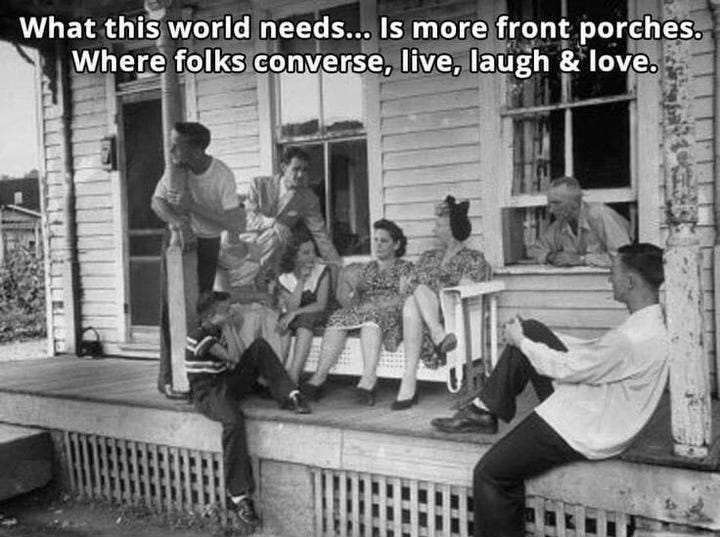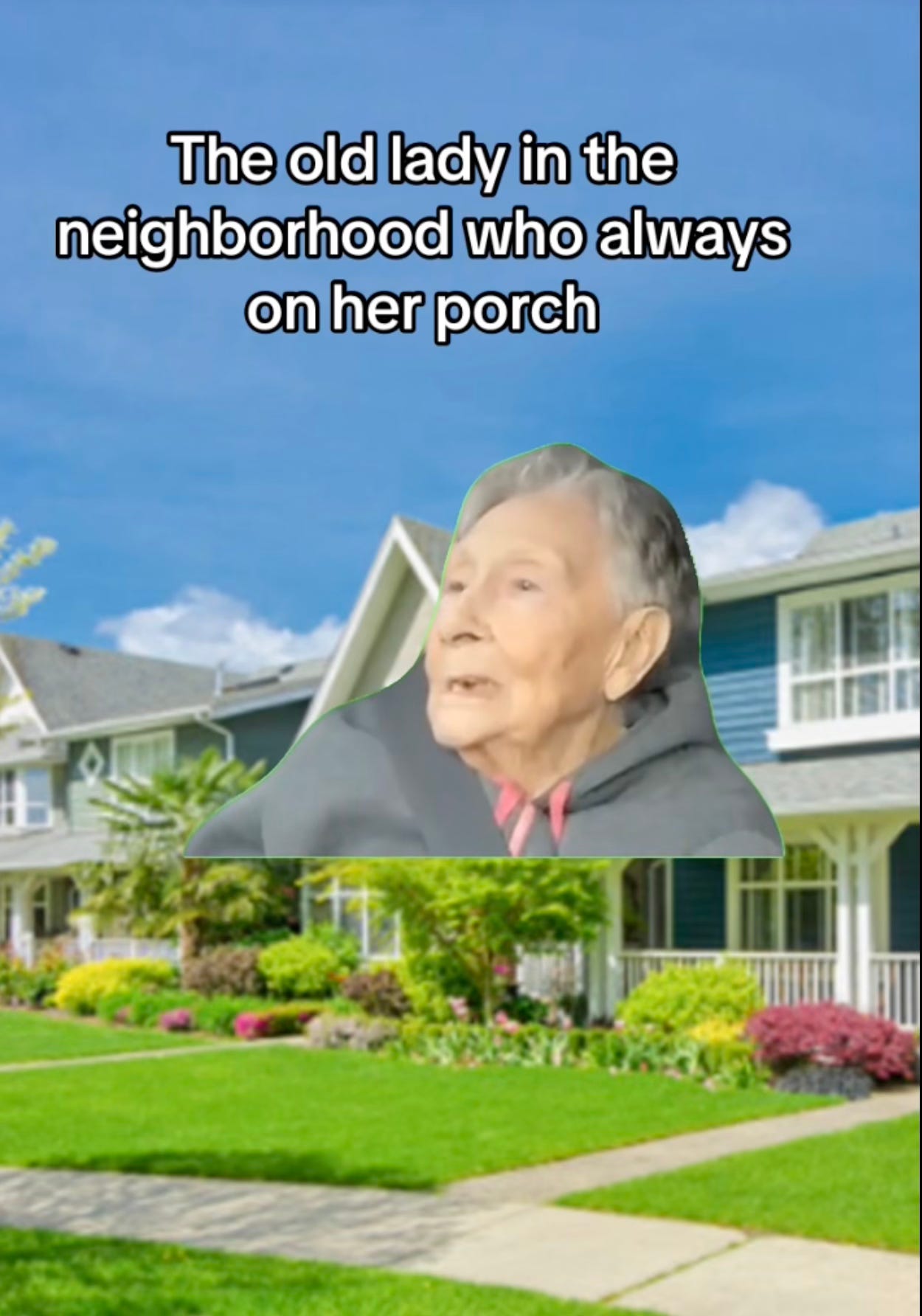We Killed the Porch. Then Wondered Why We’re Empty
The Disappearance of the Black Porch and the Quiet Collapse of Cultural Creativity
I. The Vanishing Threshold
Once, the porch was everything.
A boundary. A beacon. A beat.
Where gossip floated on the breeze, where kids got roasted, and where elders watched without saying a word.
It was therapy without an invoice, church without a pulpit, showtime without a stage crew.
Now, no one sits outside anymore.
Not because they don’t want to, but because they can’t.
New homes aren’t built with porches.
Old homes are demolished or forgotten.
And what we’ve lost isn’t just architecture. It’s an entire system of cultural memory and creative calibration.
II. The Porch Wasn’t Decoration. It Was Design.
The porch was a spatial philosophy; an African one.
In West African societies, covered thresholds blurred the line between home and world, private and communal. They were spaces of transition, negotiation, and storytelling.
According to the Smithsonian’s NMAAHC, the American porch as we know it is rooted in these traditions. It’s not colonial. It’s diasporic.
It was never just wood and nails. It was memory made structural.
Enslaved Africans brought the logic of in-between spaces with them. In the oppressive geography of the American South, they transformed it into something new.
We didn’t get to choose the homes, but we chose where to sit, what to say, and how to be seen.
It wasn’t aesthetic. It was resistance made casual.
III. Where Creativity Was Born
The porch was your first art school.
Before you knew what a monologue was, you delivered one trying to make your cousins laugh.
Before you knew what curation meant, you wore your best sneakers knowing the block was watching.
Before you knew what pacing was, you learned to wait for the right moment in a story.
The porch sharpened every sense.
It wasn’t formal, but it was formative.
It trained storytellers, stylists, comedians, preachers, actors, and orators without ever calling them by name.
It was a residency with no deadline, a stage without lights, a crowd that knew if you were lying just by how you blinked.
IV. Creativity Can’t Breathe in Isolation
Today, we create in sterile rooms.
Alone. Overexposed. Under-connected.
We build content, not culture.
Because culture needs context. Culture needs contact.
The porch was that context.
That soft background hum of someone playing music two houses down.
That smell of chicken grease mixing with perfume.
That uncle’s side-eye when you got too loud.
You don’t get that from a YouTube comment section.
You don’t get that from a brand collab.
The result is a generation of artists with talent but no calibration.
No rhythm section to play against.
Just endless self-expression with no audience that truly knows you.
V. The Algorithm Replaced the Block
We used to perform for our block.
Now we perform for metrics.
A nod from your grandmother on the porch was credibility.
A viral reel is currency.
But currency without credibility is empty.
The algorithm is fast. The porch was wise.
It told you when you were out of pocket.
When you were brilliant.
When you needed to try that story again with more detail.
Now we post and pray.
We perform and burn out.
Because without soft feedback, art becomes noise.
VI. The Disappearance Was By Design
Suburban sprawl killed porches.
Urban renewal bulldozed them.
Fear pushed us inside.
HOA rules and Ring cameras replaced community surveillance with paranoia.
But it wasn’t just policy. It was cultural gentrification.
Luxury apartments replaced porches with hollow entryways.
Sleek glass doors. Generic lobbies. Key fobs instead of knock-knocks.
You can live six feet from someone for three years and never learn their name.
Developers now sell “community” through branding, not design.
They use phrases like “co-living” and “shared spaces,” but there’s no front stoop, no soft threshold, and no shared rhythm.
The new architecture rewards transit, not presence.
Efficiency, not connection.
The porch was seen as expendable.
In reality, it was cultural infrastructure.
Its removal was not just structural. It was spiritual.
We didn’t just lose where we sat.
We lost how we saw each other.
VII. Cultural Gentrification, Digitally
This same erasure happened online.
Platforms like TikTok and Instagram capitalize on porch energy storytelling, rhythm, remix culture—while burying the environments that birthed it.
You can go viral doing something a Black grandmother would’ve done for free on the stoop.
But instead of a nod from your neighbor, you get content theft and maybe a brand deal.
That’s digital gentrification.
Your culture is aestheticized.
Your visibility is extracted.
But your infrastructure, the porch, the block, the ritual, is erased.
We’ve replaced proximity with performance.
Community with content.
And context with curation.
We scroll past the soul and wonder why everything feels hollow.
VIII. Afrofuturism Begins on the Steps
In a lecture on Black architecture and Afrofuturism, one line stayed with me:
“Afrofuturism isn’t science fiction. It’s memory projected forward.”
If that’s true, then the porch is the blueprint.
It’s not about nostalgia. It’s about designing futures with memory intact.
Students today are being taught to imagine what Black space could look like. Floating villages in Kenya made from waste. Carnival architecture being digitized and reimagined. Burial grounds being preserved through 3D scans and soundscapes.
All of these are modern porches. They are thresholds between the real and the remembered.
The porch is not an aesthetic. It’s a portal.
One we can, and must, build again.
IX. Bring It Back
Bring back the porch.
Not as a throwback. Not as a TikTok trend.
Bring it back because we are malnourished without it.
Bring it back because the culture is starving for slowness, spatial witness, and passive presence.
Bring it back because Black creativity was never meant to exist in a vacuum.
It was always shaped by sound, scent, rhythm, and context.
And most of all, community.
Start with a stoop.
Add a chair.
Let someone walk by and comment on your shoes.
Don’t record it.
That’s culture.













your essay formats are very compelling